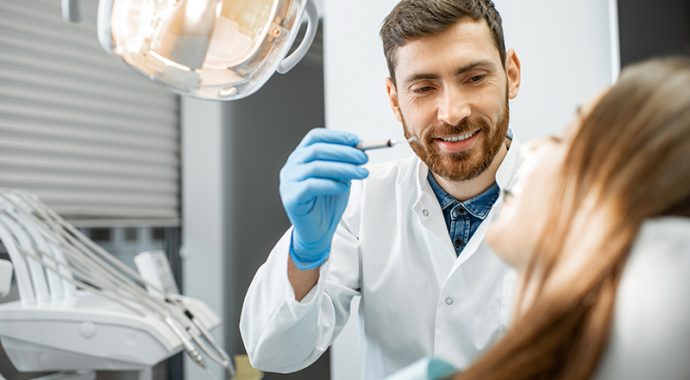
By Elizabeth LaScala, PhD
Dental school is hard work. It requires academic rigors similar to applying to medical school. The application process is complex, detailed and competitive. Here’s what to expect as you apply for dental school along with some tips for how to prepare a strong application.
Licensure
To practice as a general dentist, you will need a license. In the US, requirements for licensure differ by state, especially when it comes to clinical examination.
Education
You should have a DDS or DMD degree from an accredited university-based dental education program. The state of New York also requires a residency of one year.
Written Examination
You must pass the Integrated National Board Dental Examination (INBDE). Note: the INBDE has recently replaced Part I and Part II of the written National Board Dental Examination (NBDE).
Clinical Examination
Clinical exam requirements are where the main differences in licensure lie. Luckily, the ADA maintains a Licensure Dashboard map that shows which exams (there are several) and which type (manikin or patient) are accepted by state. Delaware administers its own exam.
Prerequisites
As with medical school and many other graduate programs, dental schools will have course prerequisites. At a minimum, expect that biology, chemistry, organic chemistry, physics, and English (or a writing-intense composition course) will be required. Schools may also require biochemistry, statistics, physiology, and microbiology – these will likely have to have a lab component. Always check the exact requirements of the schools you are interested in to make sure you are planning your coursework accordingly.
Dental Admission Test (DAT)
A general admission exam, called the Dental Admission Test (DAT) is required of those applying for dentistry programs. The test takes 4.5 hours to complete and covers four testing areas: Survey of the Natural Sciences, Perceptual Ability, Reading Comprehension, and Quantitative Reasoning. The test is offered year-round across the US. You can learn more about the test on the DAT website.
Personal Statement
Dental schools also require you to submit a personal statement. The American Dental Education Association (ADEA), which administers the dental school application service, requires a statement of no more than 4,500 characters (including spaces), which must tell a story that illustrates your personal qualities, aspirations, and reasons for pursuing dentistry.
Not sure where to start with your personal statement? It may interest you to know that the ADEA has identified six competencies essential for practicing dentistry. They define “competency” as “a complex behavior or ability essential for the general dentist to begin independent, unsupervised dental practice”. As you write your statement, you should familiarize yourself with these competencies and think about examples that best showcase your growth in one or more these areas.
The six ADEA competencies are Critical Thinking; Professionalism; Communication and Interpersonal Skills; Health Promotion; Practice Management and Informatics; and Patient Care. Since you haven’t gone through dental school yet, you are certainly not expected to be fully competent in all these areas. Also, you should NOT structure your essay to be a match for these competencies. Instead, just keep them in mind as you write your personal statement and if you feel particularly strong in a competency, by all means include it in your narrative.
Submitting Your Application
The AADSAS (Associated American Dental Schools Application Service) is the dental school application service for most dental schools in the US. Traditional applicants will prepare to submit dental school applications the summer after their junior year. It’s a good idea to have your materials ready for submission when the AADSAS opens in June. Why? US dental schools have rolling admissions. This means applications are reviewed as they come in and applicants are selected for interviews.
While most schools ask students to submit applications through AADSAS, it’s important to note that schools in Texas may use their state-specific application service.
A Final Thought – DDS or DMD?
As you look for schools that are good matches for you, you’ll find that some offer a Doctor of Dental Surgery (DDS) and others offer a Doctor of Medicine in Dentistry (DMD), or even a Doctor of Dental Medicine (DDM). These degrees are equivalent. Dentists who have a DMD, DDS or DDM have the same education and these degrees use the same curriculum requirements. So don’t let the degree titles worry you in the least.
Licensure
To practice as a general dentist, you will need a license. In the US, requirements for licensure differ by state, especially when it comes to clinical examination.
Education
You should have a DDS or DMD degree from an accredited university-based dental education program. The state of New York also requires a residency of one year.
Written Examination
You must pass the Integrated National Board Dental Examination (INBDE). Note: the INBDE has recently replaced Part I and Part II of the written National Board Dental Examination (NBDE).
Clinical Examination
Clinical exam requirements are where the main differences in licensure lie. Luckily, the ADA maintains a Licensure Dashboard map that shows which exams (there are several) and which type (manikin or patient) are accepted by state. Delaware administers its own exam.



